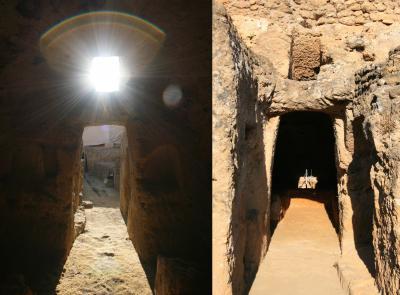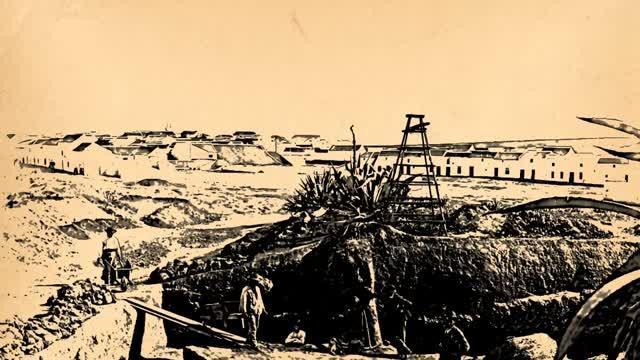The Carmona necropolis in Spain is a collection of funeral structures built between 200 B.C. and 200 A.D. One of them is known as the Elephant's Tomb because a statue in the shape of an elephant was found in the interior of the structure.
The origin and function of the construction have been the subject of much speculation and now archaeologists from the University of Pablo de Olavide say their detailed analysis of the structure suggests that it may originally have been used for worshiping the Persian God called Mithra - Mithras in Greek. Mithraism was an unofficial religion
of the Roman Empire, popular in the military and composed of secret rituals which have scant evidence. Mithras, it is said, emerged in whole form from a rock carrying a dagger and a torch.
The archaeologists believe the Elephant's Tomb was used for Mithraism because of the original structure of the building - the position of Taurus and Scorpio during the equinoxes
and that the sun shines directly through the window during the equinoxes.
Taurus and Scorpio were of special significance to the Mithraics. The main image of the cult is that of the God Mithras slaying a bull, and in the majority of these images there is also a scorpion stinging the animal's testicles.
Four stages of renovation means it had different uses.

The interior of the Tomb of the Elephant. Credit: University Pablo Olavide
"In some stages, it was used for burial purposes, but its shape and an archaeoastronomical analysis suggest that it was originally designed and built to contain a Mithraeum [temple to Mithras]," Inmaculada Carrasco, one of the authors of the study, explained to Servicio de Información y Noticias Científicas (SINC).
Carrasco and Alejandro Jiménez focus their studies on a window in the main chamber built during the first stage. Earlier studies had already suggested that the purpose of the window was not to provide light, but that rather it may have served a symbolic and spiritual purpose.
The Sun, the Moon and the stars
"From our analysis of the window, we have deduced that it was positioned so that the rays of the sun reached the centre of the chamber during the equinoxes, in the spring and autumn, three hours after sunrise," explained Carrasco.
The authors believe that at that moment a statue of the tauroctony, the statue of Mithras slaying the bull (which has been lost), would have been illuminated.
In addition, during the winter and summer solstice, the sun would light up the north and south walls respectively.
They say the position of the heavenly bodies at that time in the 2nd century reinforces the theory that the building was constructed for Mithraic worship, a religion that gave considerable importance to the constellations. As the sun shines through the window during the spring equinox, Taurus rises to the East and Scorpio hides to the West. The opposite occurred during the autumn equinox.
Other constellations such as Aquarius, Orion or Leo, which were also of significance in this religion, appear in the path of the sun in the equinoxes and solstices at that time.
Moreover, according to the authors, the Moon, although having a secondary role, may have lit up the face of Mithras with a full moon on nights near to the equinoxes.

We may never know the secrets of the Elephant's Tomb. Credit: SINC
Four stages of renovation
Apart from the window, the architecture of the original building has similarities to other Mithraic constructions.
Carrasco explained that it is "an underground structure, with a room divided into three chambers, with a shrine or altar illuminated by the window at the head. The presence of a fountain is also highly significant as these are commonly found in the Mithraeums".
According to the authors, after its period as a Mithraic temple, the building was renovated three times, giving it new functions more in line with the functions of a necropolis. A burial chamber was built and at a later date, the roof was removed, leaving open courtyards. Lastly, it was filled with rubble and used as an area for burials.
However, there are some objections to the theory that it was a Mithraic temple as it is in a necropolis, an uncommon site for buildings used for this cult which were more often found in domestic, urban or rural environments.
"A similar case is that of Sutri (Italy) where the Mithraeum is on the outskirts of the town. The structure in Carmona is in a multi-purpose space, next to the Via Augusta which connected Cadiz to Rome, close to the amphitheatre and the circus, and consequently its position should not be considered an objection," says Jiménez.




Comments